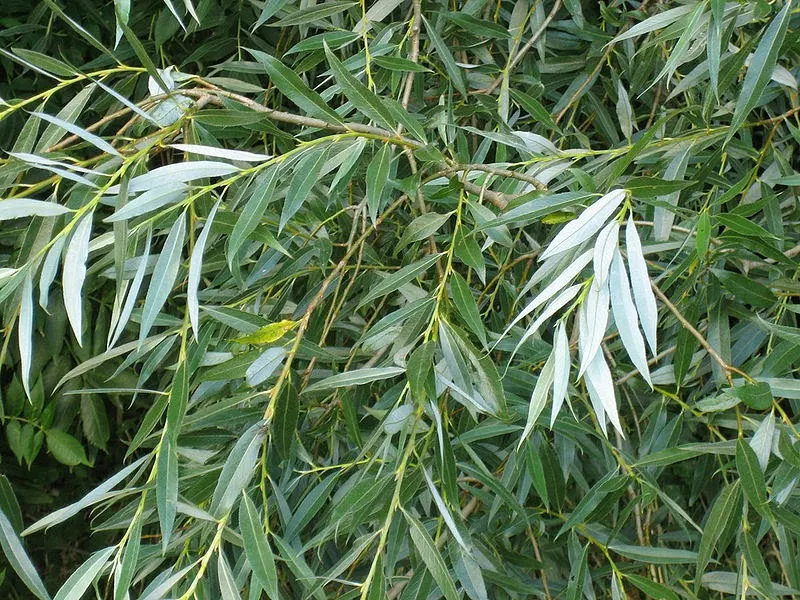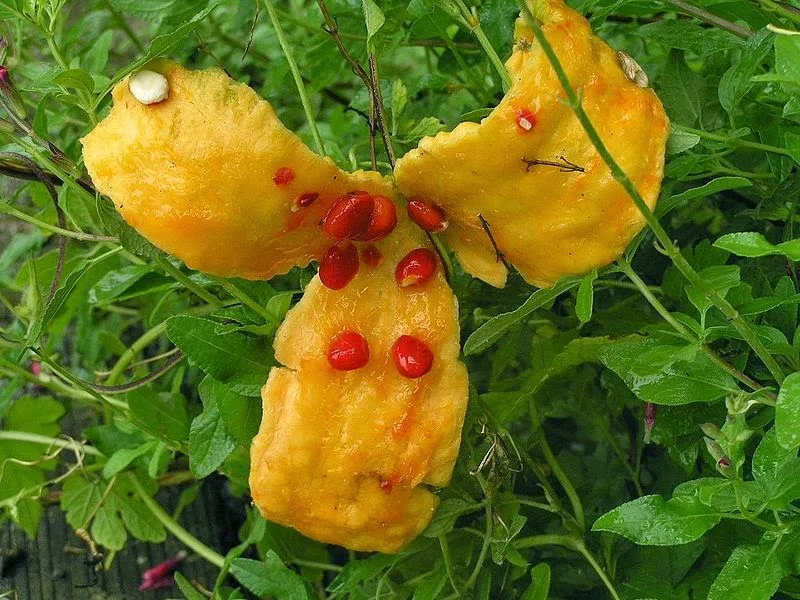By Liliana Usvat
174-365
A tea made of the vine is used for diabetes, hypertension, worms, dysentery, malaria and as
a general tonic and blood purifier. It is also very effective to relieve constipation and
colds and fevers in children.
Women in Latin American use the leaf for menstrual problems to promote discharge after
childbirth.
The tea is taken for 9 days after giving birth to clean out and tone up all the
organs involved in the delivery. Cerasee is also used as a natural method of birth control,
by taking two cups each day after intercourse, for three days. It is said that women who
drink Cerasee daily will not conceive during that time.
As a wash, the tea is used externally for sores, rashes, skin ulcers and all skin problems.
A Cerasee bath is good for arthritis, rheumatism, gout and other similar ailments.
 Cerasee comes in a variety of shapes and
sizes. The Cerasee more typical of India has a narrower shape with
pointed ends, and a surface covered with jagged, triangular "teeth" and
ridges. It is green to white in color. Some bear miniature fruit of only
6–10 cm in length, which may be served individually as stuffed
vegetables. These miniature fruit are popular in India and elsewhere in
Southeast Asia.
The flesh on
the cerasee seeds are edible and sweet in taste. The pods found all over
the cerasee vine, are first green, then turn orange when ripe.
Around the World
Cerasee comes in a variety of shapes and
sizes. The Cerasee more typical of India has a narrower shape with
pointed ends, and a surface covered with jagged, triangular "teeth" and
ridges. It is green to white in color. Some bear miniature fruit of only
6–10 cm in length, which may be served individually as stuffed
vegetables. These miniature fruit are popular in India and elsewhere in
Southeast Asia.
The flesh on
the cerasee seeds are edible and sweet in taste. The pods found all over
the cerasee vine, are first green, then turn orange when ripe.
Around the World
 In Trinidad and Tobago, Cerasee are usually
sautéed with onion, garlic and scotch bonnet pepper until almost crisp,
while in Jamaica it is consumed exclusively by drinking.
Cerasee is a significant ingredient in
Okinawan cuisine, and is increasingly used in mainland Japan. It is
popularly credited with Okinawan life expectancies being higher than the
already long Japanese ones.In the Philippines, Cerasee may be
stir-fried with ground beef and oyster sauce, or with eggs and diced
tomato.
In Trinidad and Tobago, Cerasee are usually
sautéed with onion, garlic and scotch bonnet pepper until almost crisp,
while in Jamaica it is consumed exclusively by drinking.
Cerasee is a significant ingredient in
Okinawan cuisine, and is increasingly used in mainland Japan. It is
popularly credited with Okinawan life expectancies being higher than the
already long Japanese ones.In the Philippines, Cerasee may be
stir-fried with ground beef and oyster sauce, or with eggs and diced
tomato.
 The dish pinakbet, popular in the Ilocos region of Luzon,
consists mainly of Cerasee, eggplant, okra, string beans, tomatoes, lima
beans, and other various regional vegetables altogether stewed with a
little bagoong-based stock.
Cerasee can be consumed in two ways, sauteed
or boiled, and drink as tea, or chilled, and serve as a refreshing
drink. The young shoots and leaves of Cerasee may also be eaten as
greens.Cerasee is often used in Chinese Cuisine for its bitter flavor,
typically in stir-fries (often with pork and douchi), soups, and also as
tea. It has also been used in place of hops as the bitter ingredient in
some Chinese beers.It is very popular throughout South Asia.
The dish pinakbet, popular in the Ilocos region of Luzon,
consists mainly of Cerasee, eggplant, okra, string beans, tomatoes, lima
beans, and other various regional vegetables altogether stewed with a
little bagoong-based stock.
Cerasee can be consumed in two ways, sauteed
or boiled, and drink as tea, or chilled, and serve as a refreshing
drink. The young shoots and leaves of Cerasee may also be eaten as
greens.Cerasee is often used in Chinese Cuisine for its bitter flavor,
typically in stir-fries (often with pork and douchi), soups, and also as
tea. It has also been used in place of hops as the bitter ingredient in
some Chinese beers.It is very popular throughout South Asia.
 In
Northern India, it is often prepared with potatoes and served with
yogurt on the side to offset the bitterness, or used in sabji. In North
Indian cuisine it is stuffed with spices and then cooked in oil. In
Southern India it is used in the dishes thoran/thuvaran (mixed with
grated coconut), theeyal (cooked with roasted coconut) and pachadi
(which is considered a medicinal food for diabetics).
Other popular
recipes include preparations with curry, deep fried with peanuts or
other ground nuts, and pachi pulusu, a soup with fried onions and other
spices.
In Tamil Nadu a special preparation in
Brahmins' cuisine called 'pagarkai pitla' is a kind of sour 'Koottu' ,
variety is very popular. Also popular is ' kattu a curry stuffed with
onions,cooked lentil and grated coconut mix, tied with thread and fried
in oil.
In Pakistan and Bangladesh, Cerasee is often cooked with onions,
red chili powder, turmeric powder, salt, coriander powder, and a pinch
of cumin seeds. Another dish in Pakistan calls for whole, unpeeled
Cerasee to be boiled, and then stuffed with cooked ground beef, served
with either hot tandoori bread, naan, chappati, or with khichri (a
mixture of lentils and rice).
Cerasee is widely grown in Asia, Africa, and
the Caribbean for its edible fruit, and drink, is among the bitterest of
all fruits. Cerasee is very common here in Central Florida, but very
few people really know the value of this very important herb. This herb
may hold the key to a lot of the health problems we face.
Medicinal Uses
In
Northern India, it is often prepared with potatoes and served with
yogurt on the side to offset the bitterness, or used in sabji. In North
Indian cuisine it is stuffed with spices and then cooked in oil. In
Southern India it is used in the dishes thoran/thuvaran (mixed with
grated coconut), theeyal (cooked with roasted coconut) and pachadi
(which is considered a medicinal food for diabetics).
Other popular
recipes include preparations with curry, deep fried with peanuts or
other ground nuts, and pachi pulusu, a soup with fried onions and other
spices.
In Tamil Nadu a special preparation in
Brahmins' cuisine called 'pagarkai pitla' is a kind of sour 'Koottu' ,
variety is very popular. Also popular is ' kattu a curry stuffed with
onions,cooked lentil and grated coconut mix, tied with thread and fried
in oil.
In Pakistan and Bangladesh, Cerasee is often cooked with onions,
red chili powder, turmeric powder, salt, coriander powder, and a pinch
of cumin seeds. Another dish in Pakistan calls for whole, unpeeled
Cerasee to be boiled, and then stuffed with cooked ground beef, served
with either hot tandoori bread, naan, chappati, or with khichri (a
mixture of lentils and rice).
Cerasee is widely grown in Asia, Africa, and
the Caribbean for its edible fruit, and drink, is among the bitterest of
all fruits. Cerasee is very common here in Central Florida, but very
few people really know the value of this very important herb. This herb
may hold the key to a lot of the health problems we face.
Medicinal Uses
 Today folks in the Caribbean still use cerasee as a blood cleanser; bush
bath for beautiful skin; and for diabetes, cancer and other infectious
diseases. We also use it for all types of stomach complaints including
griping or pain in the stomach, amoebas and intestinal parasites and as a
laxative. Research confirms these benefits by documenting the
anti-bacterial and anti-parasitic properties within cerasee.
Today folks in the Caribbean still use cerasee as a blood cleanser; bush
bath for beautiful skin; and for diabetes, cancer and other infectious
diseases. We also use it for all types of stomach complaints including
griping or pain in the stomach, amoebas and intestinal parasites and as a
laxative. Research confirms these benefits by documenting the
anti-bacterial and anti-parasitic properties within cerasee.
Cerasee has been used in various Asian
and African traditional medicine systems for a long time. In Turkey it
has been used as a folk remedy for a variety of ailments, particularly
stomach complaints. The fruit is broken up and soaked in either olive
oil or honey.The plant contains several biologically active compounds,
chiefly momordicin I and II, and cucurbitacin B.
The plants contains
also several bioactive glycosides (including momordin, charantin,
charantosides, goyaglycosides, momordicosides) and other terpenoid
compounds (including momordicin-28, momordicinin, momordicilin,
momordenol, and momordol). It also contains cytotoxic
(ribosome-inactivating) proteins such as momorcharin and momordin.
 Diabetes:
Diabetes:
In 1962, Lolitkar and Rao extracted from the plant a substance, which
they called charantin, which had hypoglycaemic effect on normal and
diabetic rabbits. Another principle, active only on diabetic rabbits,
was isolated by Visarata and Ungsurungsie in 1981. Cerasee has been
found to increase insulin sensitivity. In 2007, a study by the
Philippine Department of Health determined that a daily dose of 100 mg
per kilogram of body weight is comparable to 2.5 mg/kg of the
anti-diabetes drug glibenclamide taken twice per day. Tablets of Bitter
Melon extract are sold in the Philippines as a food supplement and
exported to many countries.Other compounds in Cerasee have been found to
activate the AMPK, the protein that regulates glucose uptake (a process
which is impaired in diabetics).
Cerasee
also contains a lectin that has insulin-like activity due to its
non-protein-specific linking together to insulin receptors. This lectin
lowers blood glucose concentrations by acting on peripheral tissues and,
similar to insulin's effects in the brain, suppressing appetite. This
lectin is likely a major contributor to the hypoglycemic effect that
develops after eating Bitter Melon.
Anti malarial:

Cerasee is traditionally regarded in Asia as useful for preventing and
treating malaria. Tea from its leaves is used for this purpose also in
Panama and Colombia. In Guyana, Cerasee are boiled and stir-fried with
garlic and onions. This popular side dish known as corilla is served to
prevent malaria. Laboratory studies have confirmed that species related
to Cerasee have anti-malarial activity, though human studies have not
yet been published.
Anti Cancer:
Researchers at Saint Louis University claims that an extract from
Cerasee, commonly eaten and known as karela in India, causes a chain of
events which helps to kill breast cancer cells and prevents them from
multiplying.
Cerasee has been used in traditional medicine for
several other ailments, including dysentery, colic, fevers, burns,
painful menstruation, scabies and other skin problems. It has also been
used as abortifacient, (no ideas please) for birth control, and to help
childbirth.
Anti viral:
In Togo
the plant is traditionally used against viral diseases such as
chickenpox and measles. Tests with leaf extracts have shown in vitro
activity against the herpes simplex type 1 virus, apparently due to
unidentified compounds other than the momordicins.
Laboratory tests suggest that compounds in Cerasee might be effective
for treating HIV infection. As most compounds isolated from Cerasee that
impact HIV have either been proteins or lectins, neither of which are
well-absorbed, it is unlikely that oral intake of Cerasee will slow HIV
in infected people. It is possible oral ingestion of Cerasee could
offset negative effects of anti-HIV drugs, if a test tube study can be
shown to be applicable to people.
Cardio protective:

Studies in mice indicate that Cerasee seed may have a cardio protective
effect by down-regulating the NF-κB inflammatory pathway.
Cerasee
has been used in traditional medicine for several other ailments,
including dysentery, colic, fevers, burns, painful menstruation, scabies
and other skin problems. It has also been used as abortifacient, for
birth control, and to help childbirth.
Propagation
Propagated by cuttings, which, is planted on a bed on light earth, during any of the summer months.





















